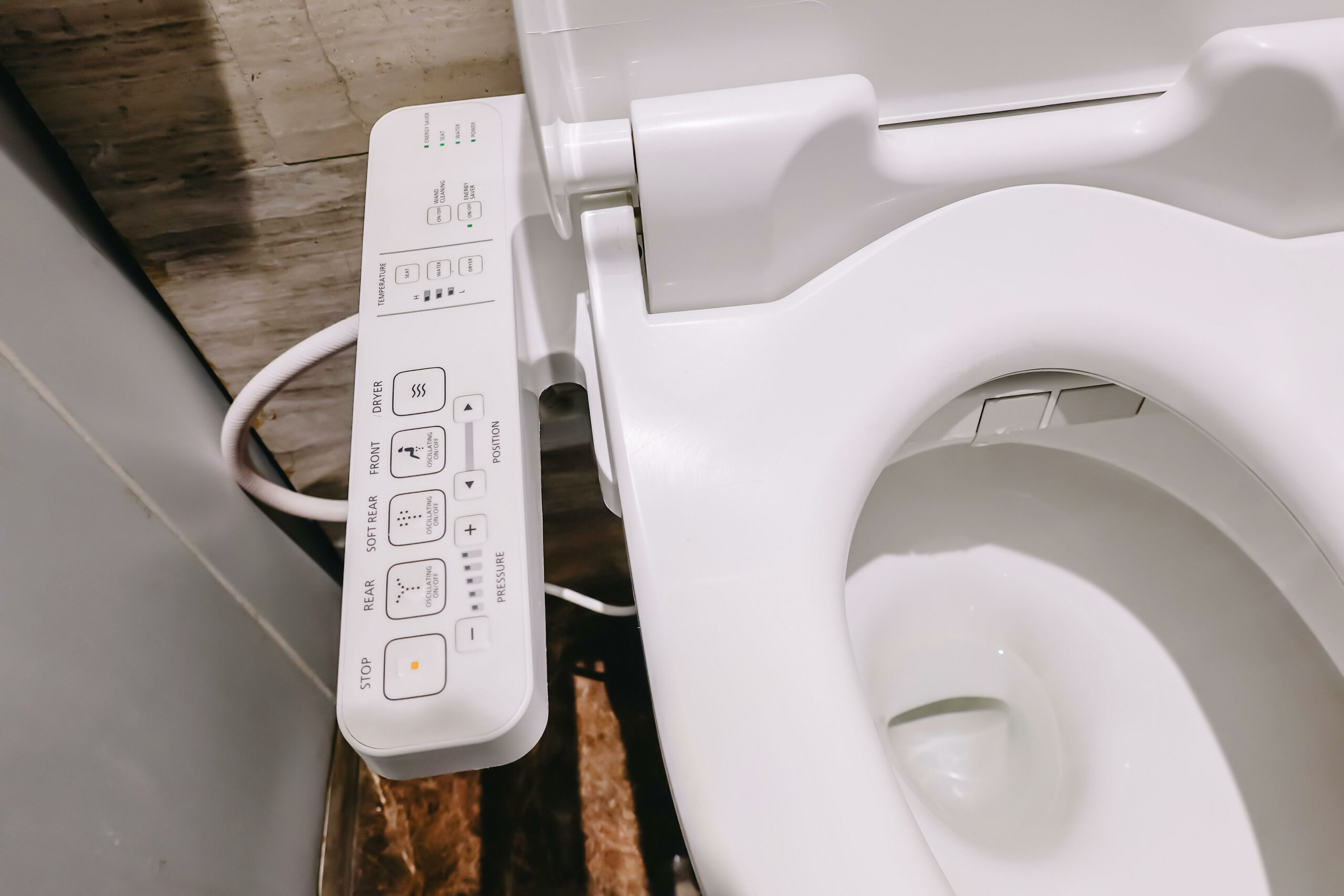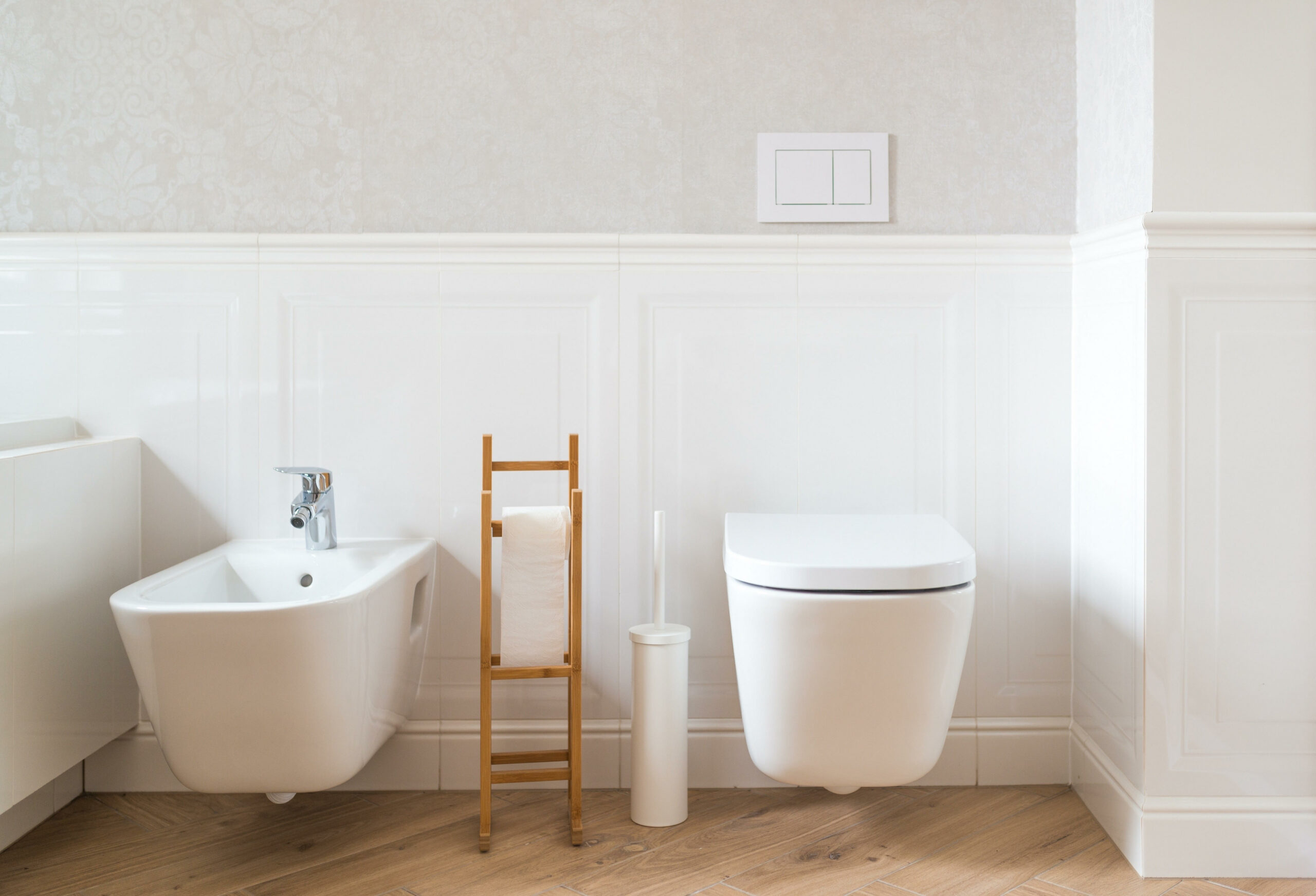Yay for Bidets!!!
Friday, January 10, 2020

By Aimee Sterk, LMSW, MATP Staff

My friend, Joe Stramondo, is a great many number of things, a dad, a philosopher and professor, a disability justice activist, and he is a champion of bidets, spreading word near and far of just how awesome they are. According to Joe, “Self-reliance when using the toilet is generally overrated, but even still, if a disabled person is looking for a way of cleaning themselves that does not require typical reach and dexterity, a bidet is an excellent option. For me, the biggest benefit is that it has sped up the process a great deal. Many mundane tasks take me longer than I’d like as a disabled person, but my bidet has taken bottom wiping off that list.”
Joe thinks bidets should be everywhere for everyone. And, in fact, in most parts of the world outside of the United States, bidets are quite popular.
Bidets originated in France in the early 1700s when bathing the whole body was considered an inconvenience. Now they are used widely all over the world, but haven’t taken hold in the United States. In Japan, for example, 70% of households have bidets.
Bidets provide a spray of water to clean your anal and/or genital areas. They can attach to a toilet or they can be a separate plumbing fixture. Modern bidets offer things like heated seats, heated water, and differing types of spray such as oscillating and pulsating. Many bidets offer air dryers as well. They range in price from $79 for a non-electric bidet seat to more than $6,000. Electric bidet seats start in the low $200 range for a “value” bidet seat to $600+ for luxury bidet seats. Bidet/toilets range from $2,000-$6,000+. I can’t really think of a benefit of having a separate bidet altogether as it would require more bathroom floor space, additional plumbing to add to your bathroom, and another transfer, but if you’re in the market for a new toilet, one that comes as a bidet/toilet could make sense if you have the budget for it. A new standard toilet plus a bidet seat is still cheaper than a bidet/toilet though.
I’ve seen bidets a couple times in my life but haven’t actually tried one so I did a little googling and found these videos to be informative about what it’s like to experience a bidet for the first time (warning not exactly completely free of toilet humor and some of the comments below the are offensive while others are helpful) and what’s actually happening when a bidet is in operation (again some useful and some offensive comments below the video). There is a helpful wiki on standard usage of standalone and built in bidets that you could use as a starting off point and adjust based on your disability and needs.
As someone who has had cdiff and irritable bowel symptoms, I wondered if bidets might be a good option for getting clean without further irritating my skin. Many comments on the videos and wikis I read indicate this is a real benefit for people with my disabilities as well–great for me and for the environment to not need to use toilet paper. It does seem like an air dryer would be something I would want as an added feature or I’d still need toilet paper.
All my research has led me to believe that bidets are an awesome option for people with shorter arms, problems twisting, decreased hand strength, irritable bowel or other gastrointestinal disabilities and other mobility disabilities. After all this research, which seat am I adding to my now-too-late holiday wishlist? The Alpha JX Bidet Toilet Seat.
Do you use a bidet? What are the benefits to you? What model and features are most important to you? Is there a benefit to a completely separate bidet that I’m not understanding?

